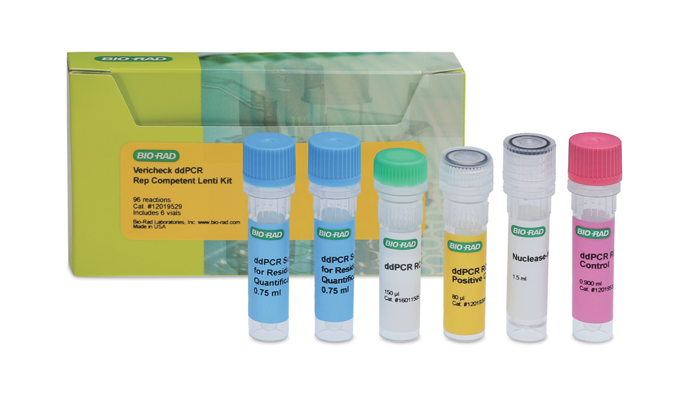How is the space of development in AAV gene therapies affecting conversations around testing?
AAVs are the most commonly used vectors for gene therapy because they are effective carriers of genetic information and are naturally safe. They persistently express the transgene product in non-dividing cells, possess a low immune profile, and, in some cases, direct the immune system to tolerate transgene products.
However, AAVs also present challenges for manufacturers – not least the issue of producing functional vectors in sufficiently high concentrations. There are also a host of impurities and contaminants that can complicate AAV development in general, so implementing the best quality measures is important to help drive the field forward.
Of particular concern is the presence of replication-competent AAV (RCAAVs), which can affect a therapy’s quality, efficacy, and safety – in the worst-case scenario, their presence could lead to a patient’s death. RCAAVs can also result in contamination of manufacturing facilities. Most current gene therapy approaches use vectors that have been modified to be replication incompetent, but RCV testing is still required by regulators to ensure safety.
Which methods are typically used for RCV testing?
In-process testing requires culture-based methods, which can take 30–45 days to deliver results. Developing RCV testing assays with high sensitivity and specificity can be challenging; moreover, the labs running the tests need to be at least biosafety level two.
For lot release – where turnaround time is crucial – regulators have draft guidance that allows the use of nucleic acid-based methods, such as quantitative PCR (qPCR) and digital PCR. When using these methods, you must ensure that i) the primers and probes used have the correct sensitivity, and ii) they will not lead to false positives or false negatives. Validating these assays, primers, and probes can be resource-intensive and time consuming.
Why is ddPCR technology such a powerful technique for gene therapy testing?
Traditionally, qPCR has been the go-to method, but in terms of overall workflow efficiency in biopharma – and getting results that are fast and reproducible, without compromising on sensitivity or specificity – ddPCR is the technology that innovative companies are now adopting.
If you are using qPCR, you must first conduct DNA extraction. Additionally, qPCR involves relative measurements, so a reference point is required, which is achieved by running a standard curve. In a regulated context, standard curves may not appear to be difficult, but they can be expensive and tiresome to maintain over time.
On the other hand, ddPCR technology is both very sensitive and highly specific, providing absolute quantification. Each 20 µl sample is partitioned into 20,000 droplets – that’s nearly two million partitioned PCR reactions in a 96- well plate – and each droplet yields a positive or negative result. Once the droplets are generated, PCR is performed to the endpoint. After amplification, the droplet reader then counts which ones are positive compared to the negative ones. If a droplet contains a target copy, it is considered a positive droplet and will exhibit increased fluorescence, whereas a droplet without a target copy is considered negative and will exhibit little to no fluorescence. The ratio of positive droplets to negative droplets is then analyzed using Poisson statistics to determine the concentration of the DNA template in the original sample.
What innovations are emerging in the ddPCR space?
Over the years, Bio-Rad has launched various contamination testing kits, including mycoplasma and residual HEK293 DNA. Recently, we have introduced replication- competent AAV and replication-competent lentivirus kits, which provide results within eight hours. We hope that these kits will help accelerate safety testing for gene therapy companies.
Our objective is to offer standardized kits that can be adopted and compared across different laboratories; as confidence builds in the consistency and reliability of these kits, we believe it will facilitate regulatory acceptance.

Why is ddPCR technology such a powerful technique for gene therapy testing?
Traditionally, qPCR has been the go-to method, but in terms of overall workflow efficiency in biopharma – and getting results that are fast and reproducible, without compromising on sensitivity or specificity – ddPCR is the technology that innovative companies are now adopting.
If you are using qPCR, you must first conduct DNA extraction. Additionally, qPCR involves relative measurements, so a reference point is required, which is achieved by running a standard curve. In a regulated context, standard curves may not appear to be difficult, but they can be expensive and tiresome to maintain over time.
On the other hand, ddPCR technology is both very sensitive and highly specific, providing absolute quantification. Each 20 µl sample is partitioned into 20,000 droplets – that’s nearly two million partitioned PCR reactions in a 96- well plate – and each droplet yields a positive or negative result. Once the droplets are generated, PCR is performed to the endpoint. After amplification, the droplet reader then counts which ones are positive compared to the negative ones. If a droplet contains a target copy, it is considered a positive droplet and will exhibit increased fluorescence, whereas a droplet without a target copy is considered negative and will exhibit little to no fluorescence. The ratio of positive droplets to negative droplets is then analyzed using Poisson statistics to determine the concentration of the DNA template in the original sample.
What innovations are emerging in the ddPCR space?
Over the years, Bio-Rad has launched various contamination testing kits, including mycoplasma and residual HEK293 DNA. Recently, we have introduced replication- competent AAV and replication-competent lentivirus kits, which provide results within eight hours. We hope that these kits will help accelerate safety testing for gene therapy companies.
Our objective is to offer standardized kits that can be adopted and compared across different laboratories; as confidence builds in the consistency and reliability of these kits, we believe it will facilitate regulatory acceptance.





